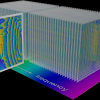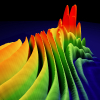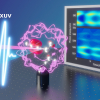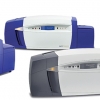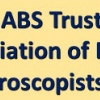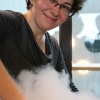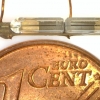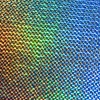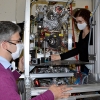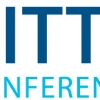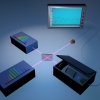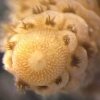News
Laser Spectroscopy News
Scientists at the Max-Planck Institute of Quantum Optics have moved holography forward by implementing it with optical frequency combs.
The first demonstration of direct fs-pulse emission from a quantum cascade laser in the mid-infrared region paves the path towards novel applications of ultrashort laser pulses.
The ability to combine and recombine solitons opens new applications in spectroscopy and materials processing.
The New York/New Jersey Section of the Society for Applied Spectroscopy are seeking nominations for their 2022 Gold Medal Award.
Attosecond transient absorption spectroscopy can track the movement of electrons at a specific site of a molecule, which permits tracing the evolution of the molecular system with spatial resolution at the atomic scale.
By combining mass spectrometry with laser spectroscopy and simulation techniques, researchers have revealed key differences in the fragmentation of dipeptide biomolecules with different chiral structures.
The Talbot effect has been used to create an interference pattern with hard X-ray beams at a sub-nanometre wavelength (0.17 nm) enabling the study of nanoscale transport phenomena.
Applied Photosphysics was founded from research by George Porter on uses of lasers for laser flash photolysis analysis of fast reactions in 1971.
Applications are invited for two awards administered by the ABS Trust.
Researchers from Chalmers University of Technology have developed a microcomb design with up to ten times higher net conversion efficiency.
Forced to consider new research opportunities due to lockdown restrictions, researchers from the Physics department of the Politecnico di Milano developed an innovative connection between the field of artificial intelligence and non-linear optics.
Quantum cascade laser absorption spectroscopy can identify nitrous oxide molecules containing two rare isotopes of nitrogen and oxygen.
Scientists at the University of Bonn have built optical fibre filters in a very simple way. They are not only extremely compact and stable, but also colour-tuneable.
Strong investment in photonics will help us fight infectious diseases that kill an unimaginable number of people and prepare us against future pandemics, says Dr Jürgen Popp of the Leibniz Center for Photonics in Infection Research (LPI) that is currently under construction in Jena.
Nuclear and atomic physicists and nuclear chemists of Mainz University and GSI are closely involved in the EU Innovative Training Network on Laser Ionisation and Spectroscopy of Actinide Elements.
In a proof-of-principle experiment, Nathalie Picqué and Theodor Hänsch from the Max-Planck Institute of Quantum Optics and the Ludwig-Maximilian University have recorded broad spectra with close to 100,000 wavelengths in almost complete darkness.
Researchers present concept for a new technique to study superheavy elements combining laser spectroscopy with ion-mobility mass spectrometry.
Marine pollutants are taken up by corals directly from seawater as well as through accumulation in their food shows research from KAUST using cavity ring-down spectroscopy. This is the first time the approach has been used to measure pollutant accumulation.
CERN’s nuclear-physics facility, ISOLDE, has succeeded in performing the first ever laser-spectroscopy measurements of a short-lived radioactive molecule, radium monofluoride.

